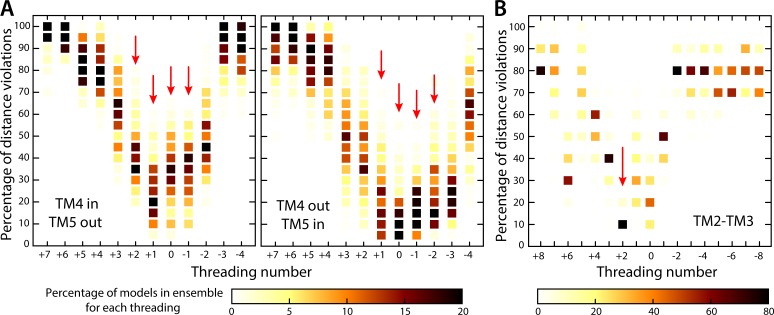Figure 4.
Quantitative evaluation of alternative threadings of the transmembrane helices of subunit a into the cryo-EM map. (A) Analysis of the TM4-TM5 hairpin; the two possible assignments of TM4 (in/out) and TM5 (out/in) are evaluated separately in each panel (see Results and discussion). In each case, 11 alternative threadings were considered (as numbered), shifted relative to each other in one-residue increments. An ensemble of models was produced for each threading and analyzed individually, in terms of the consistency of the models with the Cα–Cα distances inferred from the evolutionary couplings between TM4 and TM5 (Fig. 3 A). Specifically, each column is a histogram of the percentage of distance violations calculated for each of the ensembles/threadings; the color scale indicates the population of each bin. The threadings marked with red arrows are the most compatible with the evolutionary analysis because the corresponding ensembles include the largest populations of models with the lowest percentage of violations. (B) Analysis of the TM2-TM3 hairpin. 17 different threadings of the TM2-TM3 hairpin (in a clockwise topology relative to TM4-TM5) were evaluated through an analysis identical to that summarized in A, except that the evolutionary couplings considered are those between TM2 and TM3 (Fig. 3 A). A single threading (marked with a red arrow) stands out as the most compatible with this evolutionary data.

